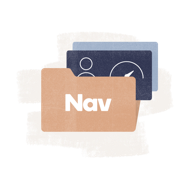Former Congressman Chris Chocola, R-Indiana, once said that one of the earliest lessons he learned in business was that balance sheets and income statements were fiction, and that cash flow was the true reality.
Investopedia defines “cash flow” as the net amount of cash that moves in and out of a business. A cash flow is positive when the amount of liquid assets is increasing and negative when they are decreasing. There are only two main ways to increase your cash flow, that is to bring more revenue in (increase sales) and/or to keep less revenue going out (decrease your expenses). For this article, I will expand upon both concepts further.
Bringing In More Revenue
There are a variety of ways you can increase your revenue and what makes you a strategic business owner (with a thriving enterprise) is the fact that you’ve developed your own secret sauce (business plan) to do so. Some ideas to bring in more revenue include, but are not limited to, the following:
- Direct Marketing Campaign For New Customers: New customers are the lifeblood of most businesses and a direct marketing campaign to target new customers for your products/services is essential for most businesses to survive. In terms of direct marketing mediums, these will include methods such as bulk mail campaigns, print/billboard ads, B2B telemarketing/cold calls, email marketing, TV/radio ads, along with marketing via the internet such as on blogs, vlogs, and podcasts. Note that these methods are legal in the US, but certain methods are not legal, such as fax blasting and telemarketing/cold calls to residential customers you don’t know or to cell phones that didn’t provide prior permission to contact.
- Indirect Marketing Campaign For New Customers: Again, new customers are the lifeblood of most businesses and an indirect marketing campaign might do the trick for your particular industry. Some types of indirect marketing methods you could utilize include search engine optimization, center of influence networks/partners/associations, along with referral marketing. The goal here is to market indirectly, which is to not communicate the availability of products and services (necessarily) to the end-user, but to communicate them to a partner, associate, etc. of the end-user and allow their communication machine to get the message out in some format.
- Increase Prices: While controversial, increasing prices can be a form of a “money grab” for your organization, just as long as your customers allow you to “get away with it.” You could implement a 2% to 5% increase in prices for example, on all products and services, which brings in more revenue.
- Promote Value-Adds and Upgrades To Current Customers: While new customers can be the lifeblood of a business, current customers can serve as a goldmine. Current customers already know your business, have used your products, and can be excellent sources going forward in relation to sustaining your business. As a result, you could offer loyalty programs, provide value-adds, upgrades, and more to current customers, all with the purpose in mind of generating more revenue from them going forward.
- Get More Value Out Of Your Operational Assets: Your operational assets of human capital and equipment, both serve as “seeds” that can be planted to produce a harvest of future revenue growth. Your goal would be to squeeze higher levels of productivity out of them without necessarily increasing the operational costs associated with them.
Decreasing Operational Expenses
While bringing in more revenue requires some form of creativity and grit, decreasing operational expenses is just about re-shifting your organization to operate in a much leaner and more efficient manner. You can achieve this by reducing down things such as labor costs, cost of goods, property costs, insurance costs, tax costs, and other associated operational costs.
- Labor Costs: It might be time to offshore some labor and/or look at implementing technologies to automate labor, which reduce down your overall labor costs and thus, decrease the amount of cash outflow for labor expenses.
- Cost Of Goods/Materials/Supplies/Inventory: You might be able to negotiate buying inventory, supplies, and materials in bulk, or from another supplier, to thus bring down overall costs.
- Property Costs: You might be able to lock in a lower business rent rate by moving to another part of town, or downsizing in some sort of way to operate in a leaner fashion.
- Insurance Costs: Maybe you have too much insurance? Or, maybe you need to move to another provider? Nevertheless, make sure your level of insurance is reasonable and the premiums costs are in line with competitive market rates.
- Taxes: Hire an excellent CPA/Accounting Professional to keep both your taxes low along with the fee for professional accounting services low.
- Marketing/Other Costs: Other operational costs including marketing, consultants, bank fees, and more, all add to the expenses of the business and the amount of cash going out of the door. Strategically managing these associated costs will assist with your goals of increasing cash flow going forward.
This article was originally written on November 22, 2017.



Have at it! We'd love to hear from you and encourage a lively discussion among our users. Please help us keep our site clean and protect yourself. Refrain from posting overtly promotional content, and avoid disclosing personal information such as bank account or phone numbers.
Reviews Disclosure: The responses below are not provided or commissioned by the credit card, financing and service companies that appear on this site. Responses have not been reviewed, approved or otherwise endorsed by the credit card, financing and service companies and it is not their responsibility to ensure all posts and/or questions are answered.